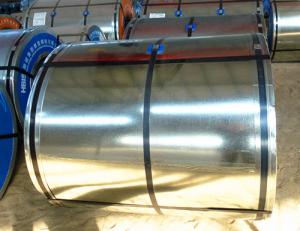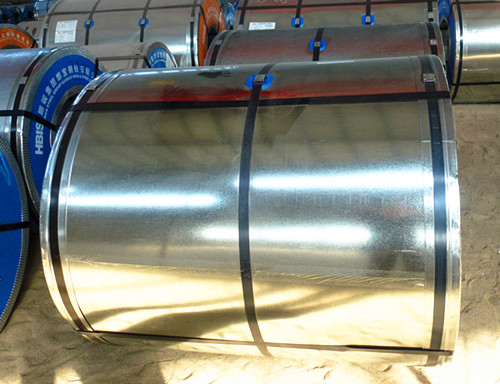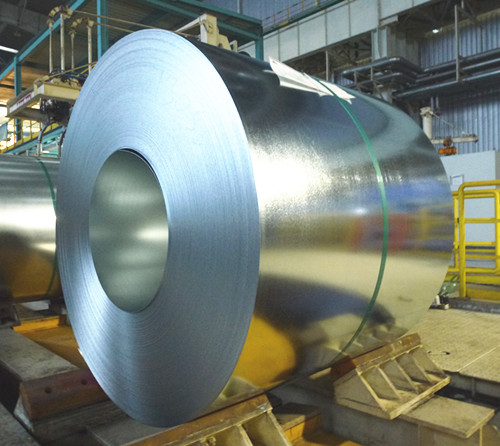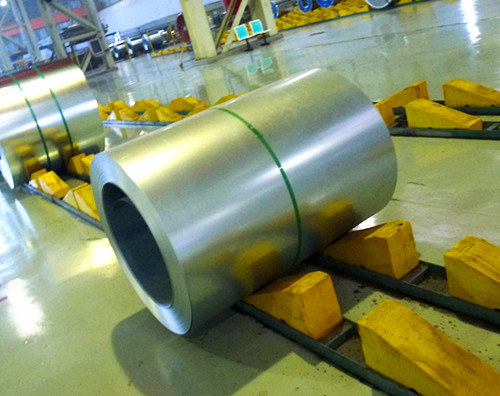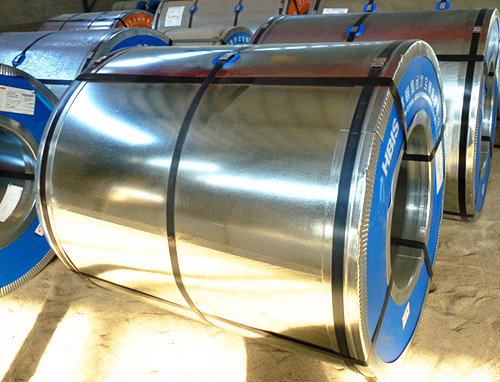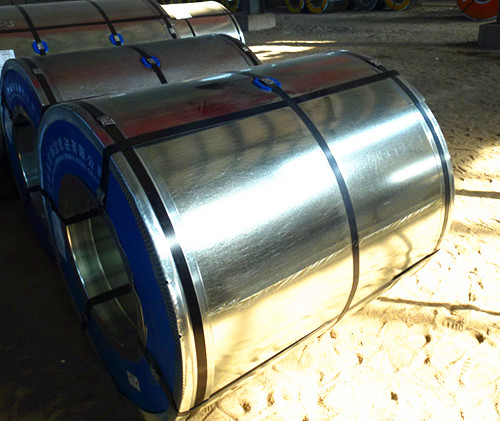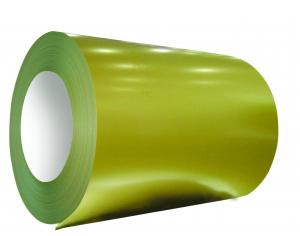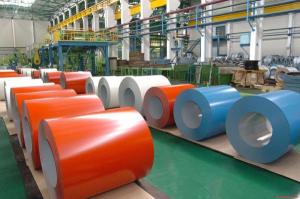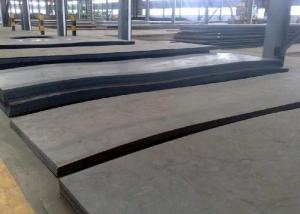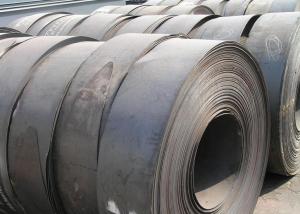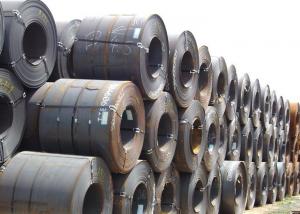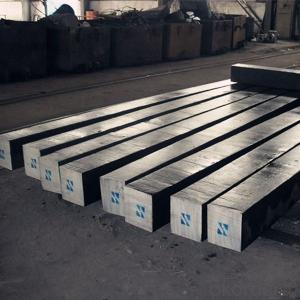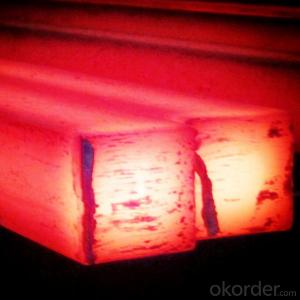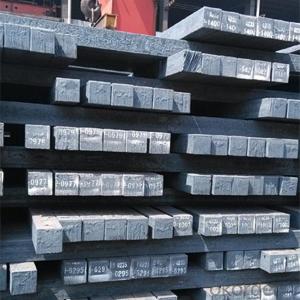GI Coil
- Loading Port:
- Tianjin
- Payment Terms:
- TT OR LC
- Min Order Qty:
- -
- Supply Capability:
- 8000 m.t. m.t./month
OKorder Service Pledge
Quality Product, Order Online Tracking, Timely Delivery
OKorder Financial Service
Credit Rating, Credit Services, Credit Purchasing
You Might Also Like
Grade: SGH340, DX51D and SGCC (customized)
Surface treatment: passivation, oiling, chromed, unoiled
Spangle types: minimal, zero and large
Thickness: 0.37 to 3.5mm
Width: greater than 1,000mm
Inner diameter: 508 to 610mm
Zinc coating: greater than 80g/m2
Applications:
Construction, home appliance, hardware and machinery
Standards:
JIS g3302 1998, ASTM a653 2003, EN10142 1990
EN10327 2004, AS1397 2001, GB2518-2004
Packing: export packing/sea worthy for international delivery
- Q: What are the different grades of steel and their respective applications?
- There are several different grades of steel, each with its own unique properties and applications. Some common grades include stainless steel, which is resistant to corrosion and widely used in kitchen utensils and appliances; carbon steel, which is strong and versatile, often used in construction and automotive industries; alloy steel, which contains various elements to enhance strength, durability, and heat resistance, commonly used in machinery and tools; and tool steel, specifically designed for making tools due to its high hardness and wear resistance. Additionally, there are specialized grades such as weathering steel, used for outdoor structures, and heat-resistant steel, used in high-temperature environments like furnaces and boilers.
- Q: How does the thickness of steel affect its strength?
- The thickness of steel directly affects its strength, as thicker steel tends to have greater strength. This is because the thickness of the steel provides resistance to external forces and reduces deformation under stress. Thicker steel can withstand higher loads and is less prone to bending or breaking, making it more durable and stronger in various applications.
- Q: How is steel pipe coated for underground gas pipelines?
- Steel pipe for underground gas pipelines is typically coated using a three-layer coating system. The first layer is a fusion-bonded epoxy (FBE) primer that provides corrosion protection. The second layer is an adhesive that helps bond the FBE to the pipe. Finally, the third layer is a polyethylene or polypropylene coating that acts as a protective outer layer. This coating process ensures the steel pipe is well-protected against corrosion and other potential damages in underground environments.
- Q: How are steel tubes used in the fabrication of hydraulic systems?
- Steel tubes are commonly used in the fabrication of hydraulic systems due to their strength, durability, and resistance to high pressure. These tubes serve as conduits for hydraulic fluid, allowing it to flow efficiently and safely between components such as pumps, cylinders, and valves. Steel tubes also provide stability and support, ensuring the system operates smoothly and reliably.
- Q: What are the different types of steel wire ropes and their uses?
- There are several types of steel wire ropes, including bright steel wire ropes, galvanized steel wire ropes, and stainless steel wire ropes. Bright steel wire ropes are commonly used in general applications where strength and flexibility are important, such as in cranes, elevators, and towing. Galvanized steel wire ropes are coated with zinc to protect against corrosion, making them suitable for outdoor and marine applications, such as in fishing nets, suspension bridges, and zip lines. Stainless steel wire ropes are highly resistant to corrosion and are used in harsh environments, such as in the marine industry, construction, and for architectural purposes like railings and balustrades. Each type of steel wire rope has its own unique properties and is chosen based on the specific requirements of the application.
- Q: How is steel plate formed into curved sections for architectural designs?
- Steel plate can be formed into curved sections for architectural designs through a process called cold bending or roll forming. This involves passing the steel plate through a series of rollers that gradually shape it into the desired curved shape. The rollers apply pressure to the plate, causing it to bend without causing any damage or compromising its structural integrity.
- Q: What are the different types of steel rails and their applications in railways?
- There are several types of steel rails used in railways, including flat-bottomed rails, bullhead rails, and grooved rails. Flat-bottomed rails are the most common type and are used for standard railway tracks. Bullhead rails, with a protruding head on top, were widely used in the past but are now less common. Grooved rails have a special groove on top, allowing them to be used in tramways or where the wheels need to be guided. Each type of rail has specific applications based on their design and characteristics, ensuring safe and efficient rail transportation.
- Q: How are steel plates used in the fabrication of pressure vessels?
- Steel plates are used in the fabrication of pressure vessels as they provide strength and durability required to withstand high pressure conditions. These plates are cut and shaped to form the shell and heads of the vessel, which are then welded together to create a sealed container capable of holding liquids or gases under pressure. The thickness and composition of the steel plates are carefully selected to meet the specific design requirements and safety standards of pressure vessel applications.
- Q: What are the different types of steel chains and their uses in lifting equipment?
- There are several types of steel chains used in lifting equipment, each with its own specific uses. Some common types include: 1. Grade 80 Chains: These chains are made from alloy steel and are known for their high strength and durability. They are commonly used in heavy-duty lifting applications such as construction and mining. 2. Grade 100 Chains: Similar to Grade 80 chains, Grade 100 chains offer even higher strength and are suitable for more demanding lifting tasks. They are often used in applications that require extra safety measures, such as overhead lifting. 3. Stainless Steel Chains: These chains are made from corrosion-resistant stainless steel, making them ideal for lifting equipment used in environments with high humidity or exposure to chemicals. They are commonly used in marine, food processing, and pharmaceutical industries. 4. Proof Coil Chains: These chains are made from low-carbon steel and are designed for general-purpose lifting applications. They are widely used in industries such as agriculture, warehousing, and manufacturing. 5. Transport Chains: Also made from low-carbon steel, transport chains are specifically designed for securing and transporting heavy loads. They are commonly used in the transportation industry for securing cargo on trucks, trailers, and flatbeds. Overall, the choice of steel chain depends on the specific lifting application, load capacity requirements, and environmental conditions, ensuring the safety and efficiency of the lifting equipment.
- Q: How is steel tubing used in the manufacturing of heat exchangers?
- Steel tubing is commonly used in the manufacturing of heat exchangers due to its high strength, durability, and heat transfer properties. The tubing is typically formed into a coil or straight sections, allowing for efficient heat transfer between fluids. The steel tubing acts as a conduit for the hot or cold fluid, allowing it to transfer heat to or from another fluid. This enables the heat exchanger to effectively regulate temperature in various industrial processes, such as HVAC systems, power plants, and refrigeration units.
Send your message to us
GI Coil
- Loading Port:
- Tianjin
- Payment Terms:
- TT OR LC
- Min Order Qty:
- -
- Supply Capability:
- 8000 m.t. m.t./month
OKorder Service Pledge
Quality Product, Order Online Tracking, Timely Delivery
OKorder Financial Service
Credit Rating, Credit Services, Credit Purchasing
Similar products
Hot products
Hot Searches
Related keywords
